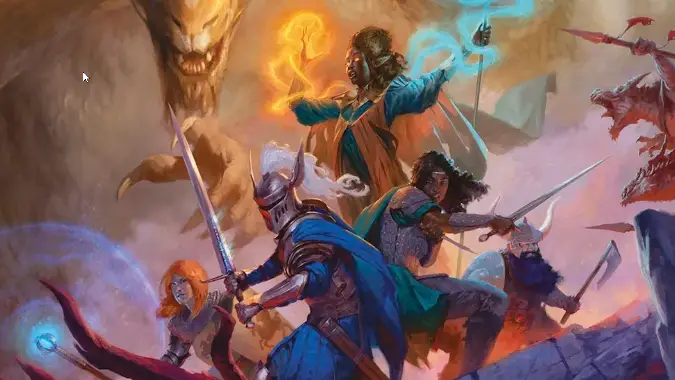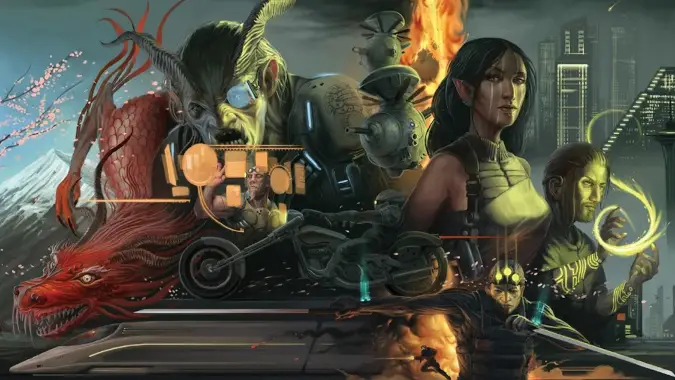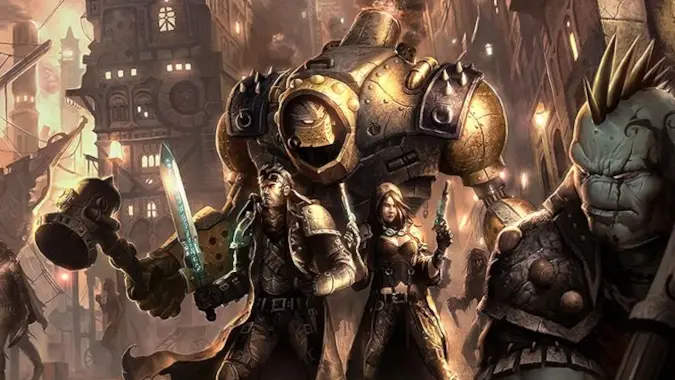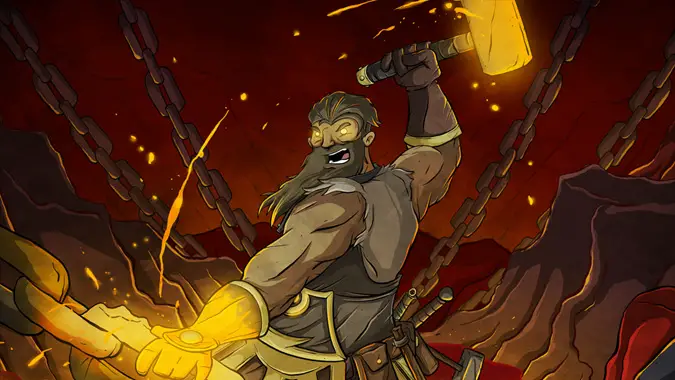TTRPG Lessons: Why some games can be set anywhere

One of the hardest concepts to explain to new players of tabletop role playing games is what, exactly, these games are.
A few definitions I’ve always liked for no particular reason are as follows:
- Interactive collaborative storytelling.
- A Christopher Guest movie but no one’s filming it
- One player sits down and writes or borrows an outline and the rest of the players steadfastly refuse to do anything the first player expected while eating greasy snacks (insert your favorite snacks here, even if it’s carrots and hummus)
- Magic shapes with numbers conjure up an evening’s entertainment
A lot of different definitions exist for the entire genre of games, for the various subgenres, and even for individual games and how they exist or function. The hobby itself is often defined in a variety of ways, from the most simple possible definition — “playing cops and robbers but with rules” — to more elaborate ones.

The TTRPG space is more chock full of jargon and abbreviations that need defining just so people can understand what’s even being talked about, chief among them, the confusion between the terms game and setting. To clear it up, I’m going to go over:
- The difference between a game and a setting
- Why there are games with and without baked in settings
- Why there are settings that dictate the game to be played while other settings that are intended for use with any game the players want to try.

What is a setting agnostic game?
A setting agnostic game does not necessarily require a specific setting or is designed for use with whatever setting you can come up with or import.
Amazingly, the biggest RPG in the world, Dungeons and Dragons, is essentially a setting agnostic game. There are default expectations that the game tends to preserve — a pseudo-medieval fantasy world utilizing various tropes such as magical spells, brave warriors, clever sneaky sorts, elves and dwarves and so on.
But there are a multitude of settings that are designed for those rules and even more settings that have been adapted to or made us of those rules from various players as well as third party publishers. Put another way, D&D is indeed setting agnostic, but Dragonlance or Planescape are not designed agnostically — they were designed expressly for use with D&D and have each been redesigned expressly to be used with multiple editions of those rules.

There are games in the hobby that are significantly more agnostic in terms of their approach to settings than D&D, which is at least designed for use in a specific fantasy genre context. Game systems like GURPS, the HERO system, Powered by the Apocalypse, FATE, and a variety of others are designed with even more designed flexibility than that. Some systems even started off as intended for use with one setting, and over time became more and more setting agnostic such as The White Wolf/Onyx Path Storyteller system.
Some games, whether deliberately or just by happenstance, are very much rooted in the rule system used for them and the setting they’re designed to be used for. This can be hard to really determine. The system originally used for Vampire: The Masquerade was very much intertwined into the setting’s World of Darkness, an umbrella that eventually included all the other games also set in that world. So the Vampires from V:tM, the Werewolves from Werewolf: The Apocalypse, and so on all existed in the same world and used the same setting.

What is a system agnostic game?
System agnostic games spring from iconic settings that can be utilized by many different TTRPG rule systems.
A good example of a setting that evolved to work with many different systems is the Iron Kingdoms setting created originally by Privateer Press for use in their miniatures games Warmachine and Hordes. It has also been released as an RPG setting for 3rd Edition D&D, an independent system created by Privateer Press itself, and is now being rereleased for 5th Edition D&D as well. This makes it a soft system agnostic setting, as it has had versions designed for two different types of D&D as well as its own independent system.

One of the best system agnostic settings is Karthun: Lands of Confict, a setting book designed to be used in whatever game system you want to use it in. Karthun is much more of a hard system agnostic setting, it’s not ported to a variety of game systems or jumping from system to system over time, rather it’s intended to be used with whatever system you please.
System agnostic settings can be tricky because how do you ensure that agnosticism? If you include stats for a variety of games, it’s less agnostic and more multi-system in its design. However, if you don’t include any stats, then someone else has to ultimately do that work, usually the game master/storyteller/DM who is trying to use that setting. It’s a tightrope in a way that setting agnostic game systems don’t have to walk.
There is no try, only do
In a way, defining the thing is less important than playing the thing, which is one of the reasons I think Actual Play streams and podcasts have taken off in recent years. Seeing people play is just a better instructor. Either way, I hope this clears up some TTRPG terminology for you and helps you enjoy these games better because there is much fun to be had that shouldn’t be dragged down by obscure references.
Please consider supporting our Patreon!
Join the Discussion
Blizzard Watch is a safe space for all readers. By leaving comments on this site you agree to follow our commenting and community guidelines.
 @MatthewWRossi
@MatthewWRossi



